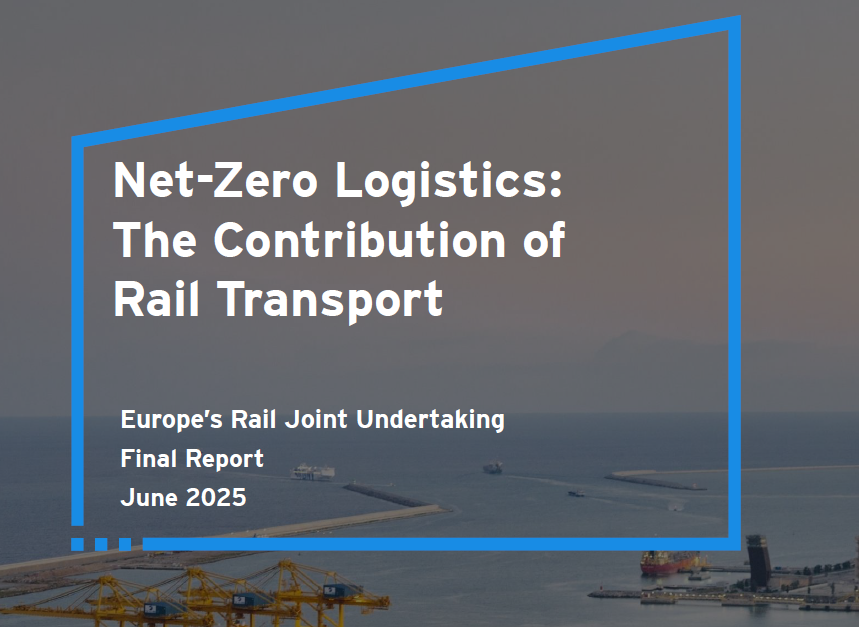Europe must take decisive steps to simplify and modernise its rail systems to strengthen competitiveness,...
Unfortunately, giving an old train a new look is easier said than done. That’s because the interiors of most rolling stock weren’t designed to be upgraded or refurbished. But the Train Modularity in Use Technical Demonstrator (TD) intends to change that by developing new modular concepts for train interiors.
Specifically, the TD has:
- Validated concepts for reducing the cost of an interior redesign and enabling train interiors to evolve during their operating life.
- Proposed new driver cabin concepts.
By allowing operators to adapt the vehicle layout to actual usage conditions, these concepts could help improve train capacity and attractiveness.
Interiors
The interior design of a train is more than just seats and aisles, it’s what frames the onboard experience – an experience that is shaped by everything from space utilisation to aesthetics, ambiance, lighting, services, seat design, materials, and technology. Yet this experience must be balanced against an ongoing need to reduce costs. A good way to strike that balance is with flexible, or modular, interiors.
That’s why the TD delivered a modular interior mock-up that includes two different train concepts, both of which feature a face and a roof, very limited fittings, and no seats, tables, or floors:
Concept 1 (C1): featuring composite panels and a hidden fixation system
Concept 2 (C2): featuring composite panels and a visible mounting
The mock-up also included an actual SNCF interior with AluCobond® panels as a reference.
Discussion
The flexibility of the two concepts’ interior panels enables the easy integration of new technologies, including induction charging, low-voltage circuits, inductive plugs, removable lights, etc. Furthermore, by taking into consideration acoustic, thermal, fire (EN-45545), and structural requirements, the concepts are well-positioned for acceptance by customers, operators, and authorities. Perhaps most importantly, the concepts demonstrate the possibility of adapting the interior design of high speed and/or long-distance trains in a relatively short time and in a cost-effective manner.
From an operational standpoint, the concepts also have the potential to decrease the quantity of cables required for installation, thus reducing overall complexity and weight. This weight reduction has a direct environmental benefit. For example, the TD showed that the two concepts could significantly reduce carbon emissions over the course of the next 30 years (19.2 t/CO2eq for C1 and 25.5 t/CO2eq for C2).
No assembly line required
Thanks to a quick and easy design, the panels can be installed by just two people in less than 20 minutes.
Key findings
- Both concepts reduce the global production costs (recurring and non-recurring) of parts.
- Using 47% fewer pieces, providing direct access to the fixation systems, and offering electric power with cabling, the concepts reduce the time to change a complete layout by as much as 43%.
- Compared to the reference, the two concepts reduce capital costs by 10%.
Conclusions and next steps
The physical mock-up and its various concepts feature 10 composite parts and a variety of modular ideas that showcase the numerous possibilities for easily changing an interior layout. These concepts and solutions are now ready to be applied to a full new train design.
Cabins
The TD also applied its modular approach to rethink train driver cabin design. Looking at different possibilities to improve attractiveness, efficiency, and ease of use, three new concepts were proposed:
Concept 1 (C1): adaptative cocoon (two bi-cabins, one compact driver’s cabin in each extremity of the train)
Concept 2 (C2): immersive chair mono-cabin (one compact driver’s cabin located anywhere in the train)
Concept 3 (C3): panoramic cabin (mono-cabin over raised)
Discussion and key findings
C1 optimises the classic cabin design with the addition of new technologies (e.g. 1st and 2nd grade automation[1]). It also introduces a novel driving experience, particularly as to the use of an adaptive dual driving mode. Overall, its innovative layout offers passengers a fresh travel experience.
C1 key findings
- 60% increase in floor surface.
- More space means more seats: an additional four seats for each extremity of the train (minimum 8 seats per train).
- This results in a +3.5% increase in passenger numbers (train of 230 passengers).
C2 disrupts the driver’s cabin as we know it, making it fully digital and allowing it to be integrated anywhere in the train. The concept has the potential to reduce weight, facilitate straightforward desk upgrades, introduce digital commands and visualisation, enable innovative train layouts, and, ultimately, redefine the driving experience.
C2 key findings
- Allows 11 extra seats for each extremity freed.
- Requires around 9 seats to integrate the new digital driver’s cabin in the passenger room.
- This translates to an additional 13 seats per train, resulting in a 5.5% increase.
C3 is a new cabin concept defined by its elevated positioning and customisable features. Its unique panoramic design gives drivers the flexibility to tailor settings (e.g. sitting vs standing, display information) based on their own personal preferences.
With such features as easy cabin access, spacious and ergonomic seating, convenient touchscreen access, and expansive exterior views, the concept prioritises driving comfort.
Furthermore, by placing the cabin ‘outside’ the train, C3 maximises passenger space and allows for nearly limitless layout possibilities.
C3 key findings
- Allows 11 extra seats for each extremity freed.
- Requires room of 6 seats to integrate the stairs accessing the driver’s cabin.
- This means 16 extra seats by train, resulting in a +7% increase in passenger numbers (train of 230 passengers).
Conclusions and next steps
Together, the three concepts show how different driver cabin designs can save floor space and, as a result, increase train capacity. All three also improve the driver’s experience by reducing fatigue, improving focus and ensuring the driver can operate the train comfortably.
Next steps include the validation of the proposed virtual design, the study of the human factors related to the specifics of the design, and all the steps towards the final design and manufacturing of one of the concepts into a train prototype.
Take a seat!
A direct result of this TD was the design and physical prototyping of ultra-light seats. Not only are the seats extremely comfortable, they are also approximately 60% lighter than the industry standard. This reduction in weight translates into an average two tonne reduction per train – a weight reduction that could reduce annual CO2 emissions by as much as 129,600 tonnes.
Beyond weighing less, the new seats also cost 40% less to produce and enable an 85% reduction in production-related CO2 emissions.
From blueprint towards prototype
The Train Modularity in Use Technical Demonstrator has advanced the idea of a cost-effective interior upgrade from blueprint towards prototype – creating new opportunities for railway operators.
[1] 1st grade automation: the existing operation with ‘manual’ driving; 2nd grade automation: next generation, where the driver supervises the operation while part of the driving is done autonomously.
















